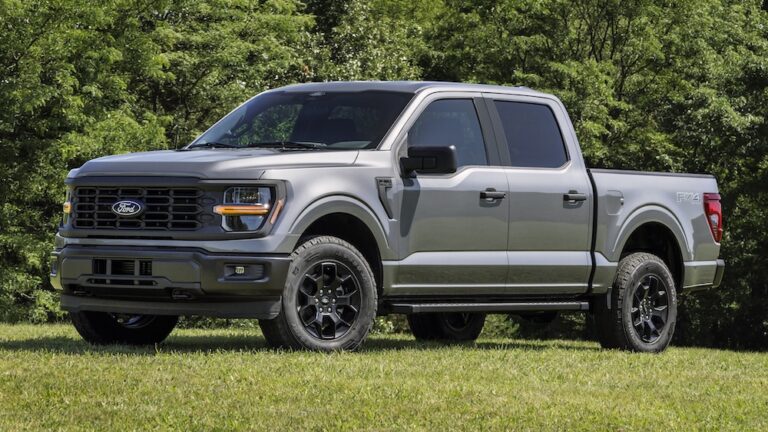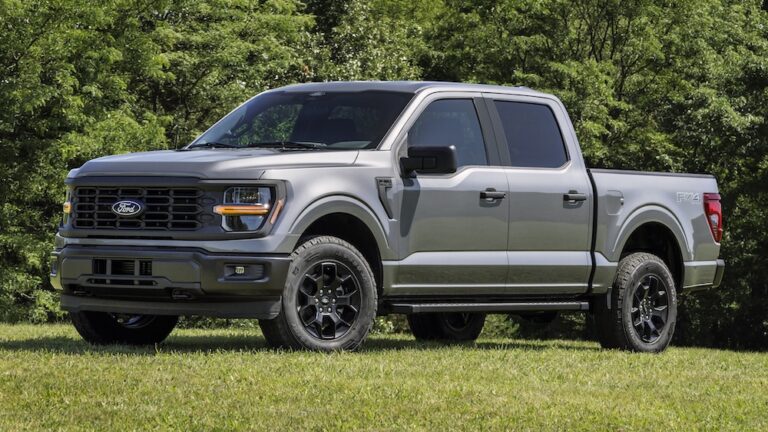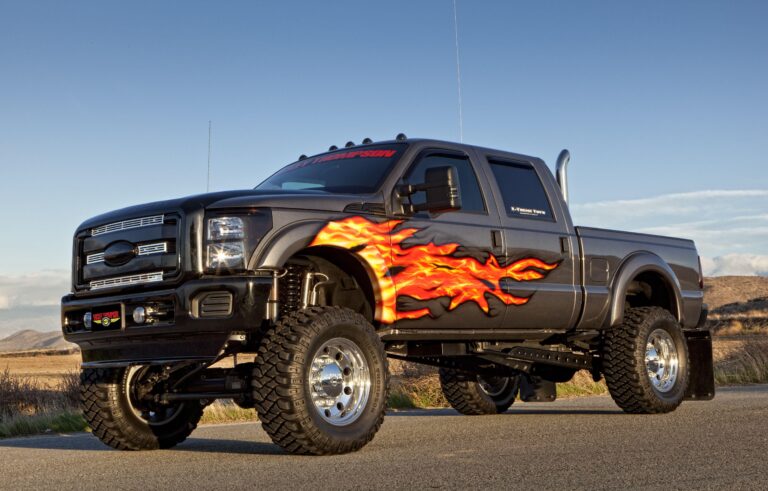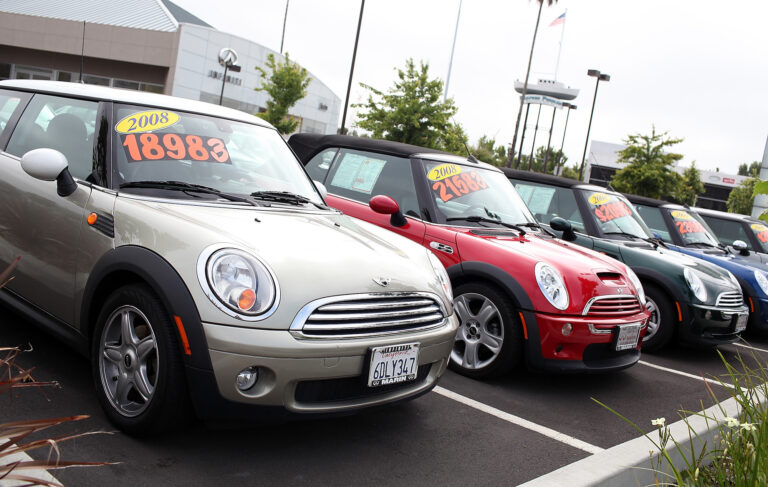70s Dodge Trucks For Sale: A Comprehensive Buyer’s Guide
70s Dodge Trucks For Sale: A Comprehensive Buyer’s Guide cars.truckstrend.com
The roar of a V8, the unmistakable silhouette, and a rugged simplicity that harks back to an era of unpretentious utility – these are the hallmarks of 70s Dodge trucks. Far more than just utilitarian workhorses, these vintage vehicles have galloped out of the past to become highly sought-after classics, capturing the hearts of enthusiasts, collectors, and those simply seeking a slice of American automotive history. For sale listings featuring these iconic Mopar machines are increasingly common, but navigating the market requires knowledge, a keen eye, and a passion for the past.
This comprehensive guide delves into everything you need to know about 70s Dodge trucks for sale, from their enduring appeal and key models to essential buying tips, potential challenges, and what to expect in terms of pricing and ownership. Whether you’re a seasoned collector or a first-time vintage truck buyer, prepare to embark on a journey into the world of these timeless Dodge legends.
70s Dodge Trucks For Sale: A Comprehensive Buyer’s Guide
The Enduring Appeal of 70s Dodge Trucks
What makes a vehicle from over five decades ago so desirable today? For 70s Dodge trucks, it’s a confluence of factors. Firstly, there’s a potent wave of nostalgia. For many, these trucks represent a simpler time, perhaps a vehicle driven by a grandparent, a first truck, or a symbol of American strength and ingenuity.
Beyond sentimentality, their rugged, no-nonsense design stands in stark contrast to the sleek, complex trucks of today. The D-Series and Power Wagons of the 70s boast honest lines, substantial chrome, and an undeniable presence that turns heads. They were built to last, with robust frames and often oversized powertrains that could handle significant abuse. Furthermore, their mechanical simplicity is a huge draw. Lacking the intricate computer systems and electronic wizardry of modern vehicles, 70s Dodges are often easier and more affordable to maintain and repair for the average enthusiast. Parts for common mechanical components are generally readily available, making them an accessible entry point into classic vehicle ownership.
Key Models and Series to Look For
The 1970s saw a fascinating evolution in Dodge’s truck lineup, offering a variety of options from basic work trucks to luxurious cruisers and specialized performance machines. Understanding the different models is crucial for any potential buyer.
- The D-Series (D100, D150, D200, D300, D350): These were the bread-and-butter of Dodge’s light-duty truck offerings. Available in various configurations including short bed, long bed, regular cab, and club cab (extended cab), they catered to a wide range of needs. The D100/D150 were ½-ton trucks, D200/D250 were ¾-ton, and D300/D350 were 1-ton. Engine options typically included the venerable Slant-Six (225 cu in) and a range of V8s (318, 360, 400, 440 cu in). Two-wheel drive (2WD) was standard, but 4×4 versions were available as the W-series.
- The W-Series (Power Wagons – W100, W200, W300): These were the legendary 4×4 variants of the D-Series, famously known as "Power Wagons." Built for off-road capability and heavy-duty work, they featured robust suspensions, transfer cases, and often larger V8 engines. Power Wagons are highly sought after by off-road enthusiasts and those who appreciate their go-anywhere attitude.
- Ramcharger / Trailduster: While technically SUVs, these full-size, two-door utility vehicles shared much of their chassis and drivetrain components with the D-Series trucks. The Ramcharger (Dodge) and Trailduster (Plymouth) offered an open-top experience with a removable hardtop (until 1981) and were popular for recreation and off-roading.
- Special Edition Trucks: Dodge released several memorable special editions in the late 70s, making them highly collectible today:
- Lil’ Red Express (1978-1979): Arguably the most famous, this high-performance truck featured a modified 360 V8, unique chrome exhaust stacks, gold pinstriping, and a distinctive red paint job. It was one of the fastest American-made vehicles of its time.
- Warlock (1976-1979): A custom-look truck with real oak sideboards, gold pinstriping, black or bright colors, and special wheels. It aimed for a more luxurious, street-cruiser vibe.
- Macho Power Wagon (1977-1981): A bold, aggressive 4×4 with large "Macho Power Wagon" decals, unique paint schemes, and often a roll bar and auxiliary lights. It was Dodge’s answer to the "sport truck" trend in 4x4s.


What to Look For When Buying: An Inspection Guide
Purchasing a vintage truck is an exciting endeavor, but it requires a thorough inspection. A few hours of careful scrutiny can save you thousands in future repairs.

- Rust, Rust, Rust: This is the primary enemy of 70s Dodge trucks. Check the frame rails, cab mounts, floor pans, rocker panels, lower fenders, wheel wells, and the bed floor (especially under the mat). Pay close attention to areas where dirt and moisture collect. Surface rust is manageable, but extensive structural rust is a deal-breaker unless you’re planning a full frame-off restoration.
- Engine and Drivetrain:
- Engine: Listen for unusual noises (knocking, ticking), excessive smoke from the exhaust (blue for oil, white for coolant, black for rich fuel), and fluid leaks. Check oil and coolant levels and appearance. The "Lean Burn" system (late 70s) can be problematic and is often converted to a conventional carburetor and ignition.
- Transmission: For automatics (TorqueFlite 727/904), check for smooth shifts and proper engagement. Manuals (NP435, A833) should shift cleanly without grinding.
- 4×4 System (W-Series): Engage 4-wheel drive and listen for clunks or grinding from the transfer case and axles. Check for leaks around differentials and transfer case.
- Suspension and Steering: Inspect leaf springs, shocks, and steering components (tie rods, ball joints) for wear and play. Drive the truck to feel for loose steering, wandering, or excessive bouncing.
- Brakes: Check the pedal feel (should be firm, not spongy) and test the brakes for pulling or excessive noise. Inspect lines and calipers for leaks.
- Electrical System: Test all lights, gauges, wipers, and the horn. Check for aftermarket wiring hacks that could indicate underlying issues.
- Interior: Dashboards are prone to cracking due to sun exposure. Check seat upholstery, door panels, and headliner for condition. Are all original components present?
- Documentation: Always ask for a clear title. Service records, original owner’s manuals, or build sheets (if available) add significant value and provide insight into the truck’s history.
Understanding Condition Grades and Pricing
The price of a 70s Dodge truck for sale varies wildly depending on its condition, rarity, and the seller’s motivation. Here’s a general guide to condition grades and their associated price ranges:
| Model/Type (Examples) | Condition Grade | Description | Estimated Price Range (USD) |
|---|---|---|---|
| D100/D150/D200 (2WD) | Project | Needs extensive body work, paint, mechanical overhaul. Not roadworthy. | $1,000 – $5,000 |
| Good Driver | Runs well, presentable, minor cosmetic flaws, reliable for regular use. | $5,000 – $15,000 | |
| Restored/Show | Professionally restored, excellent paint, interior, mechanicals. Ready for shows. | $15,000 – $30,000 | |
| W-Series (Power Wagon 4×4) | Project | Significant rust, major mechanical issues, incomplete. | $3,000 – $8,000 |
| Good Driver | Solid running 4×4, some cosmetic flaws, functional for trails/daily. | $10,000 – $25,000 | |
| Restored/Show | Frame-off restoration, show-quality paint, pristine interior, fully sorted. | $25,000 – $50,000+ | |
| Ramcharger/Trailduster | Project | Rough body, major mechanical needs, missing components. | $2,000 – $6,000 |
| Good Driver | Roadworthy, decent paint, functional 4×4, minor issues. | $8,000 – $20,000 | |
| Restored/Show | Excellent condition inside and out, fully functional, rare. | $20,000 – $45,000+ | |
| Lil’ Red Express | Project | Significant rust, non-running engine, missing specific components. | $10,000 – $25,000 |
| Good Driver | Original engine, decent paint, minor flaws, runs and drives well. | $25,000 – $45,000 | |
| Restored/Show | Concours quality, original or period-correct parts, impeccable. | $45,000 – $70,000+ | |
| Warlock/Macho Power Wagon | Project | Very rough, missing unique trim. | $5,000 – $15,000 |
| Good Driver | Presentable, unique features intact, mechanically sound. | $15,000 – $35,000 | |
| Restored/Show | High-quality restoration, all specific features correct and pristine. | $35,000 – $60,000+ |
Note: Prices are estimates and can fluctuate based on location, market demand, specific options (e.g., big block engine, specific transmission), and overall originality.
Common Modifications and Upgrades
Many 70s Dodge trucks have been modified over the years, and some upgrades can enhance usability without detracting from their classic appeal.
- Engine Swaps: Popular swaps include modern Cummins diesel engines for heavy towing, or newer generation HEMI V8s for more power and efficiency.
- Suspension Lifts/Lowers: Lifts are common for 4x4s for increased off-road capability and aggressive stance. Lowering kits are popular for 2WD street trucks.
- Brake Upgrades: Converting to front disc brakes (if not already equipped) or upgrading to larger discs significantly improves stopping power.
- Interior Modernization: Adding modern air conditioning, upgraded sound systems, or more comfortable seating can make these trucks more enjoyable for daily driving.
- Wheel and Tire Upgrades: Modern wheels and tires can dramatically change the look and handling.
Where to Find 70s Dodge Trucks For Sale
The digital age has made finding classic vehicles easier than ever:
- Online Marketplaces: Websites like eBay Motors, Craigslist, and Facebook Marketplace are excellent starting points. Be wary of scams and always verify sellers.
- Specialized Classic Car Sites: Bring a Trailer, ClassicCars.com, Hemmings Motor News, and dedicated Dodge truck forums (e.g., For B Bodies Only, Dodge Forum) often list vehicles for sale.
- Classic Car Dealerships: Reputable dealerships specializing in vintage vehicles often have a curated selection, but prices will typically be higher.
- Auctions: Major auctions like Mecum and Barrett-Jackson often feature high-end restored trucks, while local auctions can yield hidden gems.
- Word of Mouth and Local Classifieds: Don’t underestimate the power of local connections. Check local auto papers or ask around at car shows and swap meets.
The Joys and Challenges of Ownership
Owning a 70s Dodge truck is a rewarding experience, but it comes with its own set of considerations.
Joys:
- Unique Vehicle: You won’t see yourself coming and going at every stoplight.
- Community: A vibrant community of Dodge truck enthusiasts exists, offering support, parts leads, and camaraderie.
- Simpler Mechanics: Easier to diagnose and repair for the DIY mechanic.
- Relatively Affordable Parts: Many mechanical parts are shared across various Mopar platforms and are still produced.
- Investment Potential: Well-maintained or restored examples can appreciate in value.
Challenges:
- Rust Repair: This is often the biggest and most expensive challenge. Body panels can be difficult to source.
- Fuel Economy: Expect single-digit or low double-digit MPG, especially with V8 engines.
- Lack of Modern Safety Features: No airbags, ABS, traction control, or advanced driver-assist systems. Drive defensively.
- Finding Specialized Parts: While common mechanical parts are available, specific trim pieces, interior components, or unique special edition parts can be very hard to find.
- Mechanical Skill: While simpler, owning one often requires a willingness to learn basic mechanics or a budget for a trusted mechanic familiar with older vehicles.
Concluding Thoughts
The allure of 70s Dodge trucks for sale is undeniable. They represent a blend of robust engineering, distinctive style, and a connection to a pivotal era in American automotive history. Whether you envision a patina-clad daily driver, a meticulously restored showpiece, or an unstoppable off-road machine, these trucks offer a versatile platform for your automotive dreams.
By understanding the different models, knowing what to look for during inspection, and setting a realistic budget, you can navigate the market with confidence. While ownership comes with its unique set of challenges, the pride of driving a classic, the sense of connection to the past, and the admiring glances you’ll receive make the journey incredibly worthwhile. Take the plunge, and discover the enduring spirit of a 70s Dodge truck.
Frequently Asked Questions (FAQ)
Q1: Are parts readily available for 70s Dodge trucks?
A1: For common mechanical components (engines, transmissions, suspension parts), yes, many parts are still available from aftermarket suppliers or can be sourced from donor vehicles. Body panels and specific trim pieces for rarer models can be challenging to find and may require fabrication or extensive searching.
Q2: Are 70s Dodge trucks reliable enough for daily driving?
A2: With proper maintenance and any necessary mechanical refreshing, many 70s Dodge trucks can be reliable daily drivers. However, be prepared for lower fuel economy and a lack of modern safety and convenience features. A pre-purchase inspection by a mechanic familiar with vintage vehicles is highly recommended.
Q3: What kind of fuel economy can I expect?
A3: Don’t expect hybrid-level MPG. Most 70s Dodge trucks, especially those with V8 engines, will get in the range of 8-14 miles per gallon, depending on the engine, transmission, gearing, and driving conditions. The Slant-Six engines will generally be more economical.
Q4: What are the most desirable 70s Dodge truck models?
A4: The Lil’ Red Express is typically the most sought-after due to its rarity and performance heritage. Power Wagons (W-Series 4x4s) and special editions like the Warlock and Macho Power Wagon also command higher prices. Clean, low-mileage examples of any D-Series truck are always desirable.
Q5: Are 70s Dodge trucks good for towing?
A5: Yes, particularly the D200/D250 (3/4 ton) and D300/D350 (1 ton) models with larger V8 engines (400, 440 cu in). They were built as workhorses. However, consider upgrading brakes and suspension for modern towing needs and always be aware of the truck’s original GVWR and towing capacity.




